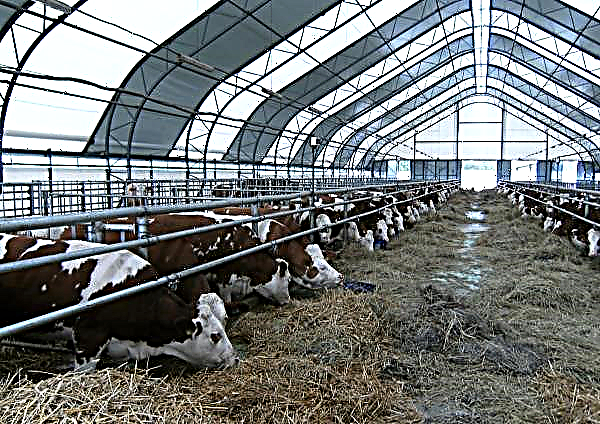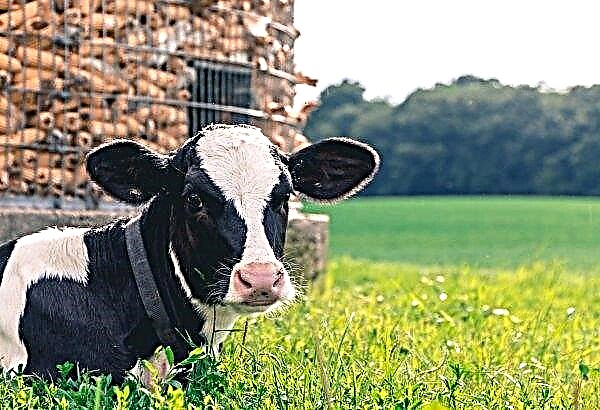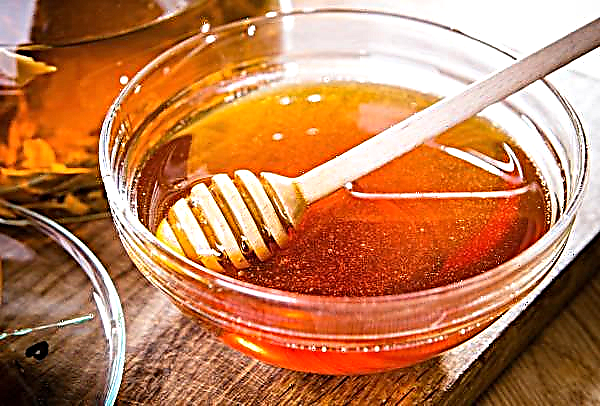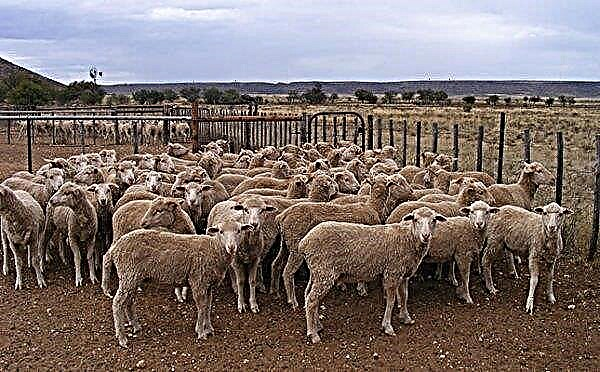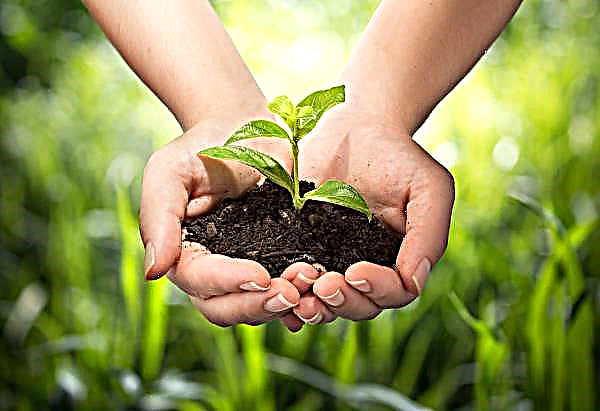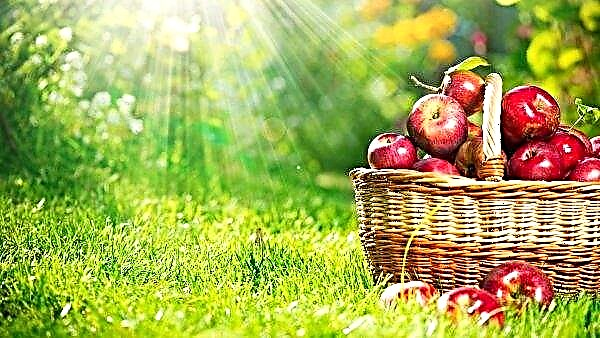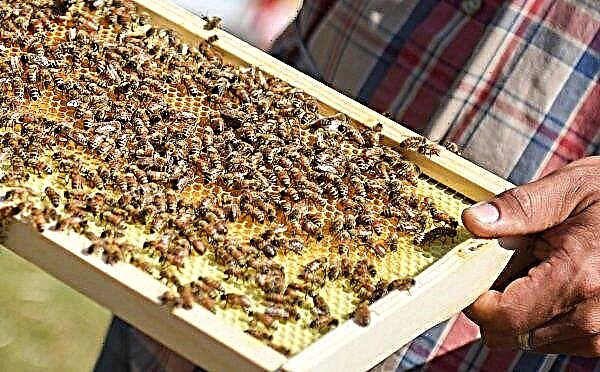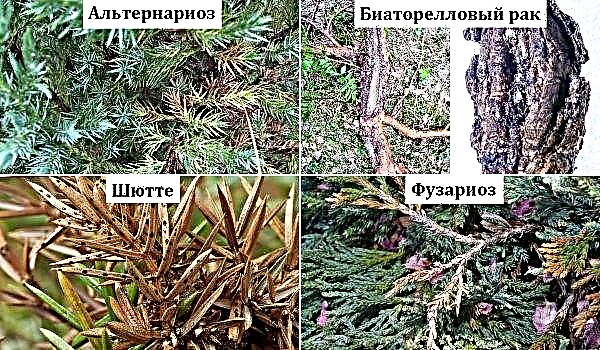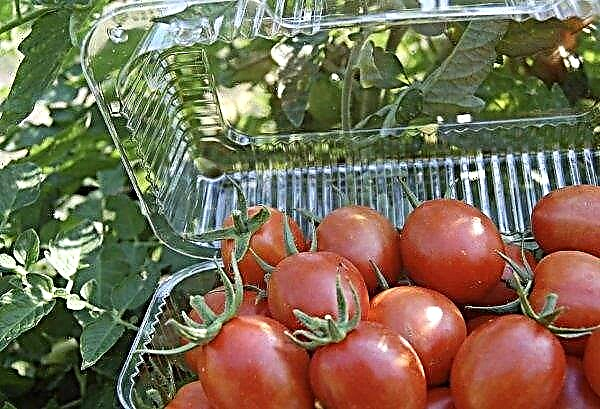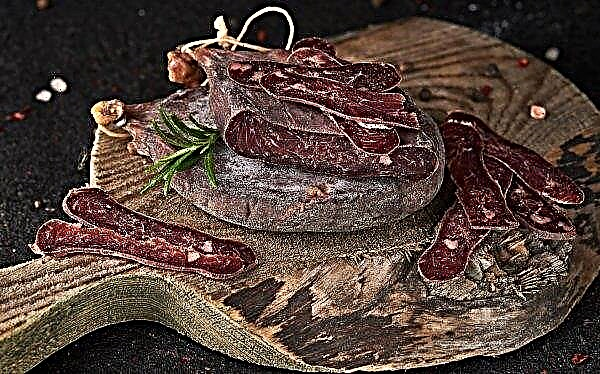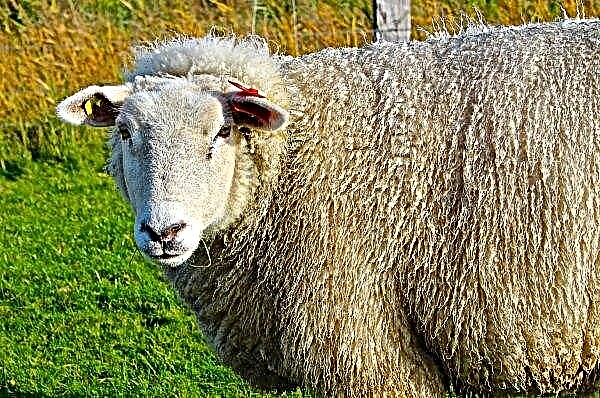Thanks to breeders, vegetable crops are replenished with new and new varieties with remarkable qualities suitable for the specific conditions and needs of gardeners. The Amur cucumber variety is hybrid, and its main advantage is its very good resistance to adverse environmental conditions. But it has other features that you should familiarize yourself with before buying.
History of Variety Breeding
Amur is a hybrid cultivar of an extremely early period of ripening, created at the selection and seed-growing company Manul, and in 2000 it was entered in the state register for all regions of the Russian Federation. Most often you can find the name Amur F1, where the designation F1 makes it clear that this is a hybrid that is derived by manual pollination and is a representative of the first generation.
Did you know? Cucumber as a vegetable that is grown for food, has a history of more than 6 thousand years.
This vegetable took the best from the parent plants, and even surpassed them in such indicators as productivity and resistance to disease. Possessing also excellent taste and commodity qualities, he won great popularity among gardeners - both experienced and beginners.
Description of the variety Amur
Vegetable can be used both for planting in open ground, and for tunnel type greenhouses. He was able to gain special popularity and distribution in the southern regions of Ukraine and Moldova due to the simplicity of agricultural technology and low whimsicality. The hybrid can provide a stable and high-quality crop in the shortest possible time, as it forms up to 8 ovaries in one node.
Bushes
The variety implies rather tall and powerful bushes, but they branch medium. The stems, in turn, are strong and capable of supporting the weight of heavy fruits. The foliage is green, medium in size, has smooth edges. The Amur hybrid is dominated by female flowers, which implies the planting of another variety, pollinator, next to it, otherwise you can get many flowers, but a small amount of yield.
Fruit
All fruits are dark green, uniform, with small whitish spines. During all ripening, they do not change their color to a yellow hue and have a small seed chamber. The fruits are rather fleshy, with no bitterness, have excellent taste and a small size of up to 15 cm. Ripen together, that is, you can collect several pieces at a time. These cucumbers can be stored for a long time, suitable for pickling and pickling.
Productivity
The variety is famous for its high productivity, which allows you to collect more than 20 kg from 1 m². It is suitable for growing in open areas, as bees can engage in pollination. But preference is best given to film cultivation, since when pollinated by bees, the fruits may result in an irregular shape (curved). You can plant it as a seedling or seedling method.
Advantages and disadvantages of the hybrid
- Among the advantages are:
- excellent presentation;
- no bitterness, excellent taste;
- resistance to many diseases;
- long lay;
- resistance to low temperatures;
- universality;
- unpretentiousness to fertilizers.
- But the minuses include:
- exactingness to soil fertility;
- obligatory regular watering.
Features of planting a hybrid
Seedling method can provide a larger percentage of seedlings, because only strong plants are required to be planted in a permanent place. The process begins in late April and ends in mid-May.
Soil selection and preparation
Pots or other containers are prepared for seedlings, not lower than 12 cm. In the future, a mixture of peat and humus must be placed there in the same ratio. Then you need to add sawdust to them, in an amount less than in the previous ingredients, 2 times. A garden mix from the store, which is intended for vegetable crops, is also suitable.
Seed treatment
To get better germination, it is recommended to germinate the seeds (but they will not need to be disinfected). This is done as follows: the seed should be placed in one of the solution options (each substance is added to 1 liter of water) - 2 tbsp. l boric acid, 1 teaspoon of baking soda, 300 ml of methylene blue - for 1.5 days. At the end of the procedure, the seeds should be decomposed on moist material, on which sand or sawdust is also laid out. So that the seedlings can resist low temperature, it should be gradually reduced to + 2 ° C and the material should be kept until it germinates.
Hardening is still required, but not for long - it is recommended to keep the seeds at a temperature of + 5 ° C for 3 days. After that, you can start planting in pots. To deepen the shift is no more than 2 cm several seeds in a pot (usually 2 or 3), after which you need to place the containers with seedlings in a room where the temperature will already be +25 ... + 27 ° C; it can be reduced to +21 ... + 22 ° C after the first sprouts appear. Seedlings also require regular watering as the topsoil dries. The most powerful sprouts must be selected already about a month after planting, with the appearance of 3-4 real leaves, followed by planting in a garden plot or greenhouse. When planting, keep a distance between the bushes of 35 cm, and between the rows - 45-50. When watering, it is recommended to use about a liter of water per seedling.
Seedlings also require regular watering as the topsoil dries. The most powerful sprouts must be selected already about a month after planting, with the appearance of 3-4 real leaves, followed by planting in a garden plot or greenhouse. When planting, keep a distance between the bushes of 35 cm, and between the rows - 45-50. When watering, it is recommended to use about a liter of water per seedling.
Landing
It is worth noting that it is worth planting seedlings in the soil, heated to a level not lower than +14 ... + 15 ° C, because at a lower temperature the chances that it will take root are close to zero. The seedless method involves planting directly in open ground. The site is best chosen for this not deprived of the sun, although a place under diffused sunlight is also suitable (for example, under trees with a not too dense crown). It is best planted after potatoes, tomatoes, peas and other siderates.
Important! To avoid negative effects and lower temperatures, you should cover everything with a film that can maintain air humidity and allow seeds to sprout.
It is extremely undesirable to land in places where crops from the pumpkin family preceded the garden. Violation of crop rotation rules leads to infection by diseases and pests of plants from the same family. The soil should be loose, neutral in terms of acidity, light and with a good degree of moisture. Since the autumn, you should fertilize the earth, digging a plot; you can make manure, as well as potash and phosphate fertilizers. In the spring, ammonium nitrate is introduced, and before sowing, wood ash is added to the bottom of the hole. More soil is disinfected with a solution of copper sulfate at the rate of: 1 tbsp. Per bucket of water substances. It uses 2 liters per 1 m². Somewhere in mid-May, when the temperature of the soil reaches + 12 ° C, seeds can be planted. They must first be germinated and hardened. They are placed in holes to a depth of 2-4 cm for several seeds, after which the holes are buried and watered.
In the spring, ammonium nitrate is introduced, and before sowing, wood ash is added to the bottom of the hole. More soil is disinfected with a solution of copper sulfate at the rate of: 1 tbsp. Per bucket of water substances. It uses 2 liters per 1 m². Somewhere in mid-May, when the temperature of the soil reaches + 12 ° C, seeds can be planted. They must first be germinated and hardened. They are placed in holes to a depth of 2-4 cm for several seeds, after which the holes are buried and watered.
Landing Rules
Cucumbers are quite capricious in leaving plants, and for the sake of a good harvest they will have to work hard.
Mandatory care points include:
- regular but moderate watering;
- loosening the soil;
- fertilizer;
- Spraying as a preventive measure against harmful insects and diseases.

Watering
It should be noted that watering the beds with cucumbers should be carried out only with warm water, which did not pass by the Amur variety. The water temperature should be +17 ... + 20 ° С. It is best to water in the evening, using a watering can with a spray so that there are no burns on the leaves.
There are two watering rates:
- before flowering, it is about 10 liters every few days;
- in the fruiting stage, about 15 per 1 m² daily.
Do not forget that the soil has always been moistened. The lack of moisture affects the development of the plant, including taste, as a result of which the cucumber may be bitter. Also, the variety requires regular weeding of the soil and removal of weeds.
Did you know? In ancient Egypt, cucumbers placed in the tombs of the pharaohs along with other values.
Top dressing
During the growing season, plants are advised to carry out such dressings:
- after 20 days from landing: in a bucket of water ammonium sulfate is dissolved - 1 tsp, ammonium nitrate and potassium sulfate - 15 g each, magnesium sulfate - 1 g, superphosphate - 3 tbsp. l .;
- during flowering - 3 tbsp. Are used per bucket of water l ammonium nitrate and potassium sulfate, as well as 1 tbsp. l of superphosphate and ammonium sulfate, 2 g of magnesium sulfate;
- when fruiting, you can use the same composition as when flowering, or fertilize with urea (50 g per bucket of water) or potassium nitrate (2 tbsp. for the same volume);
- foliar top dressing is made from urea dissolved in water (calculated per 1 bucket) in the amount of 1 part and 2 parts of nitroammophoski. Or, for the same volume - 2 parts of urea and 6 grams of magnesium sulfate and superphosphate.

The appearance of vegetables is an important indicator of the lack of certain substances, so you need to monitor this.
- If the lower leaves on the bushes become yellowness, and the fruits become irregular in shape, while their skin becomes lighter, this may indicate a lack of nitrogen. In this situation, you can feed the vegetable 2 tbsp. urea diluted in a bucket of water. You need to use half a liter for each bush.
- If young leaves dry out or lateral shoots are poorly developed, phosphorus is required. For this, 3 tbsp. superphosphate bred in a bucket of water. Consumption is the same.
- If the fruit has the shape of a pear, and on the foliage is a yellow border, then the matter is in potassium. Ash will help here (a glass on a bucket of water). Use per 1 m² - 3 liters.
- With a lack of calcium, the leaves curl, the fruits wither, and the flowers crumble. In this case, 3 tbsp. calcium nitrate is diluted in a bucket of water and watered with 0.5 l under the plant.
Mulching, weeding and loosening of soil
Mulching is done in order to preserve the roots from various negative influences, which significantly reduces labor costs. Mulch protects against temperature changes and drying out of the soil, and reduces the appearance of weeds, thereby contributing to an increase in yield. The ground under the bushes covered with such a litter does not need to be loosened. Most often, dry hay or grass, as well as sawdust, are used as mulch for cucumbers. Peat and other materials, even synthetic ones, which are designed specifically for such purposes, are suitable.
Most often, dry hay or grass, as well as sawdust, are used as mulch for cucumbers. Peat and other materials, even synthetic ones, which are designed specifically for such purposes, are suitable.
Preventative treatment
Cucumbers of this variety are resistant to many diseases, but can still be subjected to fusarium, powdery mildew, as well as various kinds of rot. Sources of these diseases are fungi and bacteria. With proper care, you can save plants from adversity. It is necessary to monitor the condition of the soil: avoid excessive moisture and ensure air access to the roots. To prevent powdery mildew, it is impossible for the plants to freeze, and if the temperature drops too much, it is necessary to cover them with a film or agrofiber.
Important! Always use protective equipment before using the drugs, and clearly follow the instructions.
For prevention and treatment, it is recommended to use "Fitosporin" - a microbiological preparation. In its composition are bacteria that produce fungicidal substances, but at the same time they are harmless to humans and soil. This drug is also effective for Fusarium and rot. However, rot can be avoided if the crop is properly watered, and planting cannot be thickened - that is why there are recommendations on the planting scheme. You also need to carefully weed out the weeds, do not let the water stagnate and prevent the vegetable crop from freezing. There are a lot of preparations for processing. In any specialized store you will be given the necessary recommendations. Of the parasites most common: whiteflies, sprout flies, spider mites, thrips, nematodes. Currently, there are many insecticides of various nature on the market. The most famous: "Aktara", "Intavir", "Iskra", "Confidor" and others. But the most important points in the prevention for any crop are compliance with crop rotation and agricultural practices, as well as meeting the requirements of plant growing conditions.
There are a lot of preparations for processing. In any specialized store you will be given the necessary recommendations. Of the parasites most common: whiteflies, sprout flies, spider mites, thrips, nematodes. Currently, there are many insecticides of various nature on the market. The most famous: "Aktara", "Intavir", "Iskra", "Confidor" and others. But the most important points in the prevention for any crop are compliance with crop rotation and agricultural practices, as well as meeting the requirements of plant growing conditions.
Possible diseases and pests
As already noted, despite the sufficient resistance of the variety to diseases, this still does not mean their complete absence.
The most common diseases and pests:
- Powdery mildew (fungal disease). On the leaves you can see a whitish coating, due to which they gradually die. Contributes to the appearance of the disease cloudy and cold weather. In sunny weather and high ambient temperatures, the fungus is not viable. When occurring, they are treated with fungicidal preparations.
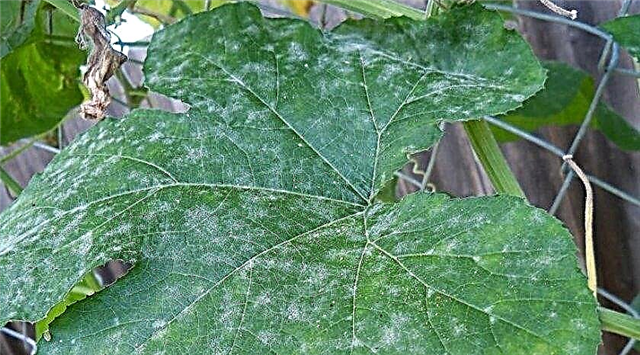
- Cladosporiosis characterized by the appearance on the parts of plants of dark brown spots, which rapidly increase. Most often, infection occurs through soil in which spores remain. For treatment, watering is temporarily stopped and the plants are treated with a solution of Bordeaux fluid or other drugs.

- Sclerotinia or white rot. It is characterized by white spots on the stems and foliage, which darken over time and spread throughout the plant. Damaged areas begin to rot. Prevention is planting cucumbers at the required distance from each other and cultivating the land. For treatment, lime, crushed coal is used, and the affected parts of the plants must be removed.
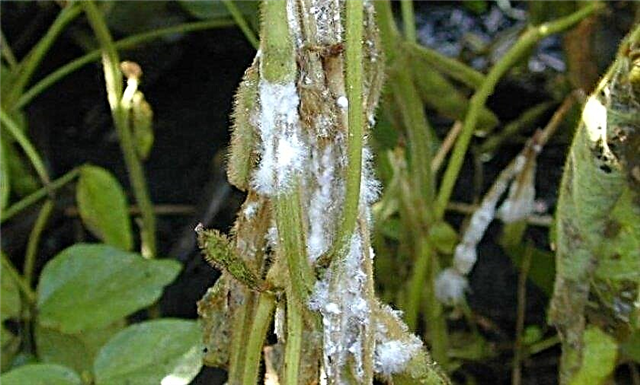
- Ants can both harm and be beneficial. But when they start on the beds, they most often damage the roots of plants, and also bring aphids with them. For the fight, special traps are used, for example, with syrup, which will lure insects. You can fill their nests with kerosene or boiling water.
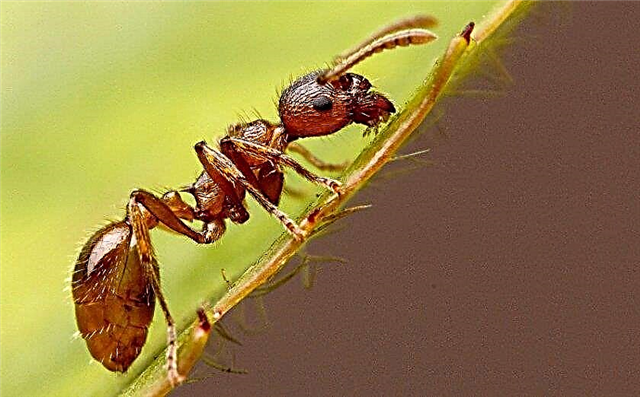
- Whitefly - small winged insects that feed on the sap of plants, which is harmful. It is difficult to withdraw them due to high fecundity. You can plant tobacco in the aisle, which distracts insects from the cucumber crop, and also use the loosening of the soil.
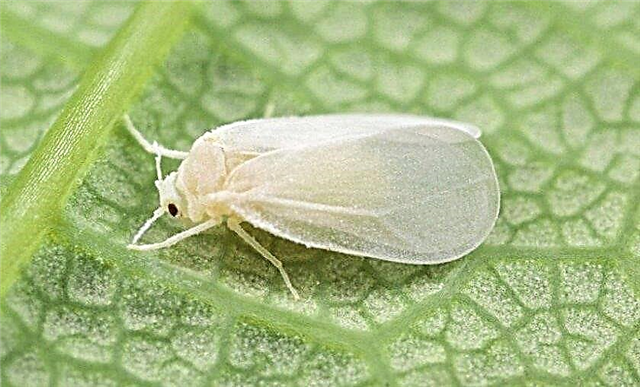
You can get rid of aphids and whiteflies by attracting insects that destroy them: ladybugs and lacewings. You can spray the plants with garlic solution. Infused chopped head of garlic for a week in half a liter of water, dilute the infusion with water (1 teaspoon of infusion per 1 liter of water).
Features of harvesting and storage of crops
Collect cucumbers, like other vegetables, it is better in dry weather. It is recommended to cut the fruit with a knife so as not to injure the stem. Too small cucumbers are better not to pick, as they still grow. At the same time, this variety is not prone to overgrowing: upon reaching its characteristic size, the vegetable simply ceases to grow further. The fruits are perfectly transported and stored in plastic packaging, while not moldy.
Storage conditions - temperature +4 ... + 6 ° С, with humidity not more than 75%. Presentation is not lost until 10 days. So, Cupid F1 has established itself as a very good variety. Its positive features, such as frost resistance, high productivity, excellent taste characteristics, presentation, shelf life, make it an excellent choice for sites of all sizes.






